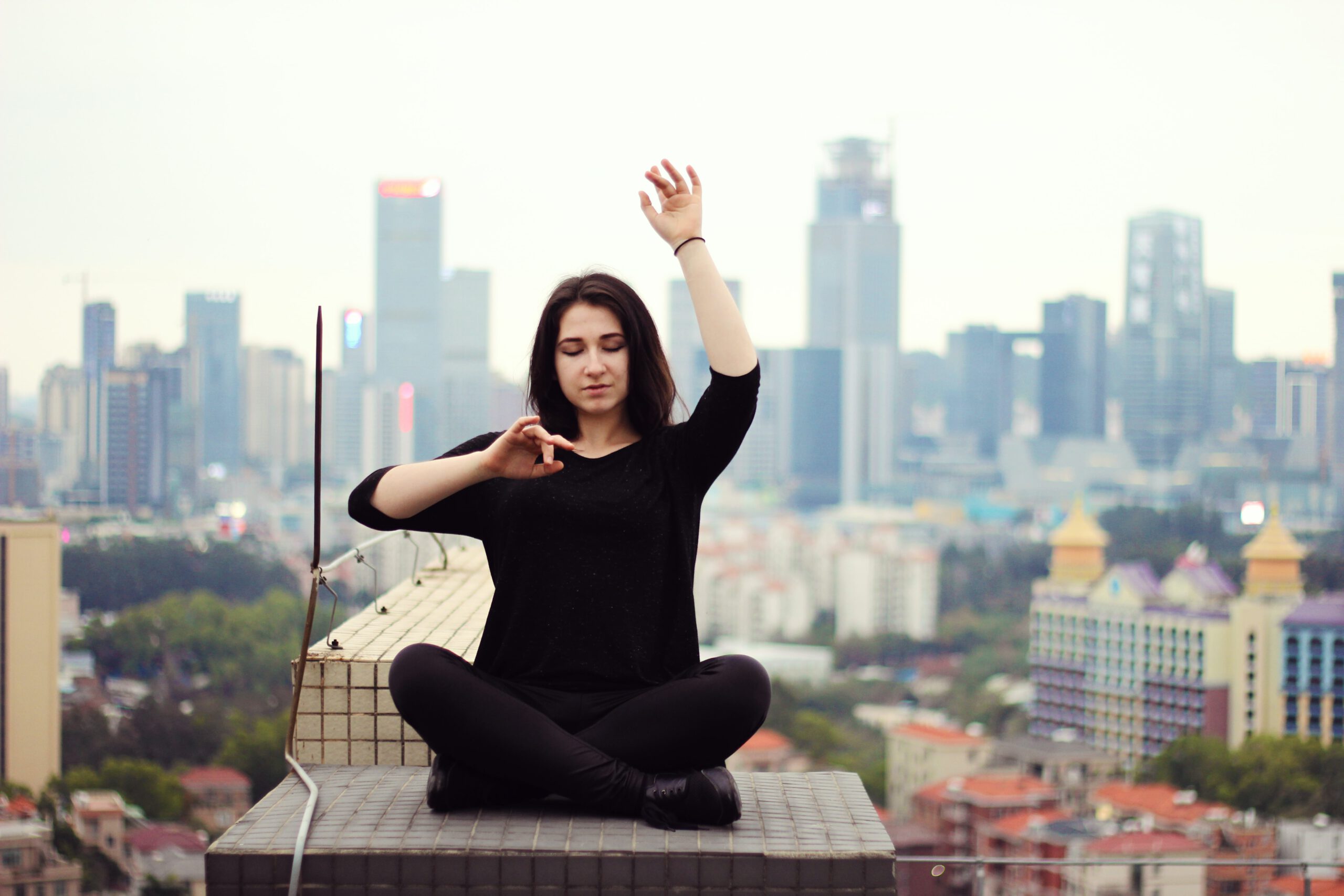Breathing exercises are a great way to improve your ability to focus when you need it most.
Breathing exercises are also a great way to quickly calm down, such as before a tough task like a meeting or lecture.
Breathing exercises can usually be done anywhere, at any time, and in an unobtrusive manner. You must practice the breathing techniques often if you want to learn how to do them safely.
Choose your favorite exercises from the list below. You can then add them to your daily life or use them when you need to.
How Does It Work?
The autonomic nervous system regulates human breathing automatically. When one is under a lot of physical strain, one’s breathing becomes faster and one starts to gasp. Breathing becomes deeper and calmer in the presence of minor stress.
But you can now control the autonomic nervous system by breathing consciously and on purpose. This helps you focus and relax more.
Try one of the following breathing exercises to see which one works best for you. Different people respond differently to different breathing techniques.

1. The Coachman’s Seat
- Sit in the front row of a chair or stool.
- Lean forward with your upper body.
- Use your elbows and forearms to support your knees, with your hands loosely hanging down.
- Then, slowly breathe into your abdomen through your nose. This is called diaphragmatic breathing.
- Exhale through the lip brake
Instructions The lips are placed loosely on top of each other in the lip brake so that when exhaling, the cheeks puff out slightly and the air flows out through the narrowed mouth opening with a “pfff” sound, for example. To keep breathing stable, the lips brake.
Information about the exercise:
The coachman’s seat is a breathing-friendly position. The name is derived from the coachmen who used to nap in this position on the coachman’s seat.
2. Relaxation Breathing Exercise – 5 Seconds
- For about five seconds, breathe in evenly through your nose.
- Then exhale for five seconds through your mouth.
- For about five minutes, do these breathing exercises.
3. Alternate Breathing Patterns
- Sit comfortably in the chair’s seat.
- Shut your eyes.
- In and out, take a few deep breaths (belly breathing).
- Now, gently press your right thumb against the right nostril to close it.
- Inhale for about 4 seconds through the open left nostril.
- Close both nostrils with your thumb and index finger and hold your breath for about 8 seconds.
- Then, for 8 seconds, exhale through the opposite nostril (i.e., right).
- Inhale through the right nostril again, hold your breath, and exhale through the left.
- This pass should be repeated three times. You can increase that to ten passes with practice.
Information about the exercise:
While lying down, alternate breathing can also be practiced. This yoga breathing technique is useful for calming down and increasing concentration.

4. The 4-7-11 Breathing Technique
- Inhale for 4 seconds through your nose. As you breathe in, imagine yourself absorbing a soothing fragrance.
- Then exhale for 7 seconds through your mouth.
- Perform this breathing exercise for 11 minutes.
Information about the exercise:
It facilitates sleep and is thus ideal for sleeping in bed. The exercise should be done for at least 11 minutes to have a calming effect.
5. Slow Down Your Exhalation
- Exhale for roughly twice as long as you inhale. For instance, if you inhale for five seconds, then try to exhale for ten seconds.
- Simply exhale slowly and deliberately. This greatly relaxes you.
6. “Pump Up” the Lungs
- Lie down or sit.
- Shut your eyes.
- Inhale deeply while mentally counting to two.
- Hold your breath and count to two again. Exhale slowly.
- Continue to breathe in, counting two units each time.
- Count to two while holding your breath.
- Continue to breathe in and count to two until your lungs are full and you can no longer breathe in.
- Then, in one breath, slowly exhale through your mouth.
- Stay still and keep breathing normally.
Information about the exercise:
For at least five minutes, go somewhere where you won’t be disturbed.
If you repeat this exercise three times in a row, you will notice that your tension and nervousness will leave your body and your concentration will improve.

Breathing Technique 4-4-4
- Inhale for 4 seconds through your nose.
- Then, for about 4 seconds, hold your breath.
- Then, for 4 seconds, exhale through your mouth.
Information about the exercise:
It promotes relaxation and concentration and is ideal for “breathing breaks” at work.
Breathing Exercises in General:
- perform several times
It is best to do your favorite breathing exercises several times a day: in the morning, at noon, at night, or whenever you are stressed. You can set an alarm on your phone to remind you to take “breathing breaks.”
Breathing pauses can also help relieve stress and improve focus right before a challenge, like a hard conversation, an exam, a lecture, or just something exciting.
Important: When performing, stay within your comfort zone and avoid breathing in and out “to the hilt.” It is recommended that weaker people (seniors, patients, etc.) do it sitting or lying down.
- practical: an acoustic timer
There are numerous smartphone apps that can assist you with your breathing rhythm visually and acoustically; use them as a supplement.

- Direct breathing
Contact breathing can also help you learn breathing exercises and become more aware of your breathing. Place one or both hands on different parts of the body to accomplish this (e.g., abdomen, chest, ribs). This will increase your awareness of your breathing.
You can also place your flat hand between your mouth and nose. You can immediately feel the air flow in your lungs this way.
- Relaxation music and aromatherapy
Breathing exercises can benefit from the addition of breathing aids. Relaxation music, natural sounds, fragrances (which have a direct effect on the autonomic nervous system), and images are examples of these.
You’ll be able to relax faster and more deeply if you do a breathing exercise while looking at a picture with a harmonious theme, soft relaxation music is playing in the background, and a calming scent is gently spread around the room.



4 thoughts on “7 Best Breathing Exercises for Concentration”
Comments are closed.